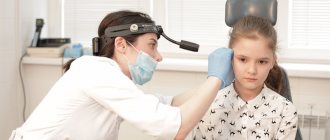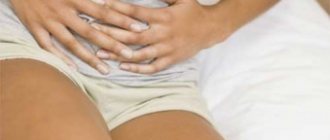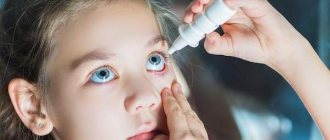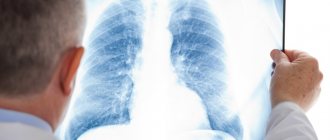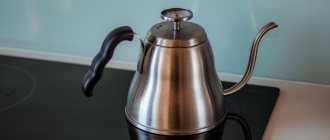Inflammatory processes in different parts of the ear lead to irritation of the nerves, swelling and severe pain. Treatment of otitis media must be started as quickly as possible, otherwise there may be serious consequences.
ALENA PARETSKAYA
Pathophysiologist, immunologist, member of the St. Petersburg Society of Pathophysiologists SVETLANA KOMAROVA Otolaryngologist, Deputy Chief Physician for CER at SM-Clinic
Acute pain in the ear is one of the most painful sensations. Many patients compare its strength with toothache and severe injuries, and women - with the process of childbirth. Most often, ear pain is due to otitis media.
What is otitis media
Otitis is the general name for inflammatory processes in the ear area.
Inflammation can be acute or chronic, affecting various parts of the ear. If the inflammation is localized in the auricle and ear canal to the border of the eardrum, this is otitis externa; inflammation in the tympanic cavity is otitis media; if the area of the cochlea is affected, the inner part of the ear is internal otitis or labyrinthitis.
These pathologies are extremely painful, accompanied by fever, hearing impairment, and discharge from the external meatus. In addition, without treatment, otitis media can lead to serious complications - hearing loss or complete deafness, paresis in the area of the facial nerve, damage to the bones or brain.
Acute otitis media of the middle ear: what causes inflammation?
The inflammatory process is always caused by pathogenic microorganisms, which means that the prerequisites for their activation must be present in the body. The causes of otitis media are:
- hypothermia;
- diseases caused by infection (flu, ARVI, measles);
- inflammatory processes of the ENT organs (the tympanic cavity is connected to the nasopharynx via the Eustachian tube, it is not surprising that the infection from the nasopharynx easily penetrates into the middle ear);
- improper nose blowing;
- hypertrophy of adenoid vegetations;
- rhinitis, sinusitis;
- allergic reactions;
- deviated nasal septum;
- foreign object in the ear;
- damage to the hearing organ.
Causes of otitis media in adults
The most common causes of otitis externa are injuries, infections of the skin and underlying tissues in the ear canal area.
Chemical trauma to the ear, irritation and inflammation due to wax plugs, water getting into the ear, and the formation of boils are also possible. Otitis media is the most common form of the disease. It is usually provoked by bacterial infections, less commonly by viruses, pathogenic fungi, and mixed infections. The most common pathogens:
- Pneumococcus;
- hemophilus influenzae;
- influenza virus;
- various pathogens of ARVI.
In recent years, cases of fungal otitis media have become more frequently reported.
Risk factors that increase the likelihood of otitis media include sniffing and excess mucus in the nasopharynx. pressure difference when diving, diving to depth. Often, otitis media becomes a complication of a cold, ENT pathologies (adenoiditis, tonsillitis, pharyngitis, rhinitis). The risk is higher in people with immunodeficiencies.
Epidemiology
The prevalence of inflammatory diseases of the external ear ranges from 17 to 30% among all otiatric pathologies. The growth of this pathology is facilitated by deteriorating environmental conditions, an increase in the level of resistance of the flora, an increase in the number of people with metabolic disorders, immune status, including allergopathology, irrational treatment of acute inflammatory pathology, untimely contact with an otorhinolaryngologist (ENT doctor) and a number of others moments.
Otitis externa is a fairly common disease, but the epidemiology has not yet been sufficiently studied, including due to the different designations of the same type of pathological process. Inflammatory diseases of the outer ear occur in all countries and regions of the globe, but are most often observed in hot and humid climatic regions; an increase in incidence is noted in the warm season. On average, every 10th person experiences this disease at least once during their lifetime, and 3–5% of the population suffers from a chronic form of otitis externa. On average, 0.4% of the population suffers from acute external otitis every year. The disease is most common among people exposed to high humidity for a long time.
Otitis externa occurs in all age groups, the highest prevalence is observed in older children and young adults, then increases slightly after 65 years. The incidence of inflammatory diseases of the outer and middle ear in men and women is approximately the same. No racial differences have been identified in the epidemiology of otitis externa.
Symptoms of otitis media in adults
With external otitis, the most common complaints are:
- pulsation in the ear, sharp pain radiating to the neck, eye or teeth;
- increased pain when chewing food, talking, closing the jaw;
- redness of the ear canal and auricle;
- hearing loss if there is discharge of pus into the ear canal area.
Acute otitis media begins with a rise in temperature along with shooting pain inside the ear.
It increases as mucus and pus accumulate in the cavity; after 2–3 days, the membrane ruptures, pus flows out of the ear and the condition improves. The temperature drops and the pain subsides. Then the rupture of the membrane heals without a trace. In the chronic form, mesotympanitis may occur - inflammation is localized in the area of the Eustachian tube and the lower, middle part of the tympanic cavity. A hole is formed in the membrane, but the membrane itself is stretched.
Key complaints:
- hearing loss;
- periodic appearance of pus from the ear;
- noise in the ear;
- dizziness;
- during exacerbation - pain and fever.
With the development of epitympanitis, a sharp decrease in hearing occurs, the release of foul-smelling pus, pressure in the ear, pain in the temples, and dizziness. Periods of exacerbation are followed by remissions, but hearing does not improve completely.
What are the types of the disease?
The hearing organ consists of three areas; accordingly, inflammation is divided according to its location.
The outer section rarely becomes the target of any inflammation. More often, external otitis develops due to boils, eczema, and acne. Drafts and hypothermia can also become a provoking factor. In this case, we are talking about a point form of the disease. When a large area of the ear is affected, we talk about diffuse inflammation. External inflammations are relatively easy because they are visible to the naked eye, immediately manifest themselves and are quickly diagnosed. But there is a danger that the infection will get into the inner parts of the ear, so therapy must be carried out in a timely manner to prevent complications.
Otitis media is more common in adults. With this type of disease, the components of the tympanic cavity become inflamed. There are many variations of this diagnosis, and if middle ear inflammation is not given timely attention, the risk of serious and even dangerous complications is extremely high.
Make an appointment right now!
Call us by phone or use the feedback form
Sign up
For adults, the greatest danger is inflammation of the inner ear (labyrinthitis). It does not manifest itself as an independent disease. More often it occurs as a complication. Such otitis is accompanied by complications, as a result of which hearing can completely disappear. A distinctive feature of this form of the disease is that the person does not experience pain, but experiences severe dizziness and hearing problems.
Diagnostics
The diagnosis can be suspected based on typical complaints, but the doctor will ask in detail where and how the ear hurts, press on the tragus, pull the earlobe down to determine whether there is pain. In addition, the otorhinolaryngologist will examine the ear using instruments and lighting to specifically examine the ear canal, eardrum, and determine whether there is pus or perforation in it. To determine sensitivity to antibiotics, flora culture is performed. The doctor may also prescribe:
- blood tests (general, biochemistry) to determine the nature of inflammation;
- X-ray of the paranasal sinuses, if a connection with sinusitis is suspected;
- X-ray of the temporal bone in chronic otitis media.
All this data is needed in order to determine treatment tactics, the need for antibiotics, surgical interventions (membrane perforation or other interventions).
What causes the disease?
If there is inflammation in the ear, then it must contain pathogenic microorganisms - bacteria, viruses or fungi. The following causes of otitis media in adults can be identified:
- Inflammation of the outer ear most often results from the ingress of water from polluted reservoirs containing pathogens;
- if the skin of the hearing organ is damaged, infection can enter the bloodstream through wounds or scratches and cause inflammation;
- the disease can act as a complication after an untreated cold;
- when some disease is already occurring in a chronic form in the human body, then this constant source of infection can easily activate the inflammatory process;
- excessive zeal when cleaning ears; Earwax is a natural barrier that prevents bacteria from entering the ears, and there is no need to try to remove it every day;
- poor hygiene: never use someone else’s headphones or earplugs, they may contain pathogens;
- a foreign body in the ear can cause illness (for example, an insect caught in it).
As you can see, there are quite a few sources of infection. In order to correctly diagnose the disease and treat it, it is necessary to distinguish between the symptoms of otitis media.
Friends! Timely and correct treatment will ensure you a speedy recovery!
Modern methods of treatment
We asked otolaryngologist Svetlana Komarova to talk about how otitis in adults is treated today. According to her, drug therapy may include:
- drops in the ear containing the analgesic Phenazone and the local anesthetic Lidocaine - to relieve pain and reduce inflammation, if discharge from the ear appears, antibacterial drops containing Rifampicin or Ciprofloxacin should be used;
- vasoconstrictor drops containing Xylometazoline 0.1%, Oxymetazoline 0.05%, Naphazoline 0.1%, Phenylephrine 0.025% are instilled into the nose to reduce swelling of the nasopharyngeal mucosa around the mouth of the auditory tubes;
- if local drugs are ineffective, analgesics and non-steroidal anti-inflammatory drugs (Acetylsalicylic acid, Paracetamol, Tramadol, Ketoprofen, Ibuprofen) are prescribed orally;
- antipyretic drugs (Paracetamol) are used when the temperature rises above 38.5 C;
- antihistamines (Diphenhydramine, Clemastine, Chloropyramine) are prescribed to reduce swelling;
- broad-spectrum antibacterial drugs: penicillins, cephalosporins, macrolides, respiratory fluoroquinolones.
Non-drug treatment methods:
- procedures prescribed by an otolaryngologist: lavage of the external auditory canal, catheterization of the auditory tube, blowing of the auditory tubes according to Politzer, pneumomassage of the eardrum;
- physiotherapy: ultraviolet irradiation, UHF, microwave therapy, electrophoresis with anti-inflammatory drugs as prescribed by a physiotherapist.
Non-drug treatment methods help relieve pain, restore hearing and prevent complications.
In case of complicated otitis or the ineffectiveness of conservative therapy, surgical treatment (myringotomy, bypass of the tympanic cavity, radical surgery on the middle ear) is indicated, aimed at sanitizing the source of infection, restoring hearing, and preventing relapses.
GBOU "NIKIO im. L.I. Sverzhevsky" of the Moscow Department of Health
Chronic suppurative otitis media means chronic inflammation of the middle ear. Chronic inflammation is a consequence of acute inflammation; Many factors contribute to the transition of acute or subacute inflammation to chronic, such as, for example, a decrease in the general resistance of the body, the presence of chronic tonsillitis (and in children, adenoiditis), chronic inflammation of the paranasal sinuses (sinusitis), chronic catarrhal or vasomotor rhinitis, nasal dysfunction breathing and patency of the auditory tube, etc. To cure a patient from chronic inflammation of the ear, it is necessary first of all to sanitize the nose and pharynx and restore nasal breathing.
In its course, it is always accompanied by discharge from the ear and hearing loss, and sometimes by severe intracranial and labyrinthine complications. For a long time, without affecting hearing, chronic otitis media does not cause concern in patients and reduces their alertness to the need for early elimination of a purulent focus of infection in the middle ear. That is why broader public information about the characteristics of chronic inflammation of the middle ear is needed. To understand them, you need to have some understanding of the structure (anatomy) of the middle ear.
The middle ear, which has the shape of an irregular tetrahedral prism filled with air, is located in the temporal bone and communicates with the air of the nasopharynx through the auditory tube. The eardrum separates the middle ear from the external auditory canal. For the most part it is stretched like a drum; only a small upper part of it is relaxed. The central part of the middle ear is the tympanic cavity; An auditory tube is located in front of us, and a cave (antrum) is located behind us. The cave is a large air cell in the temporal bone, communicating with the tympanic cavity. In a healthy ear, in the temporal bone, in addition to the cave, there are many other small air cells (cells), which all communicate with the cave. If otitis media (acute and, especially, chronic) develops in early childhood, then these small air cells, except for the cave, do not develop. An important structure of the middle ear is the 3 auditory ossicles, connected by small joints. The first bone - the malleus - is tightly fused with the eardrum, and the third - the stapes - with the inner ear (labyrinth) through the oval window, with the walls of which the stapes is connected by a thin ligament along the entire perimeter of its base. The inner ear has another window - a round one, closed by a durable membrane that separates the inner ear from the middle ear. Both windows are close to the nerve cells, the sound-receiving cells of the cochlea. All formations of the middle ear are covered with a mucous membrane that extends, as it were, from the nasopharynx into the middle ear. One of the features of the anatomical structure of the middle ear is the presence of small narrow spaces, especially in the upper and posterior parts of the tympanic cavity, formed by the auditory ossicles, ligaments and folds of the mucous membrane. With inflammatory swelling of the mucous membrane, these spaces are early isolated from the general tympanic cavity and become inaccessible for drug treatment. Another feature of the middle ear is the close proximity of the inner ear, which favors the penetration of toxic inflammatory products (and some toxic drugs, such as streptomycin, neomycin) into it and damage to auditory nerve cells. And finally, the third feature is the close location of the cranial cavity with all its structures, which are separated from the middle ear by a thin layer of bone tissue. This facilitates the penetration of infection into the brain tissue during purulent destruction of the dividing bone.
Chronic suppurative otitis media is characterized by discharge from the ear of a purulent, mucous or mucopurulent nature, which can be abundant or scanty, constant or periodic, with long or short intervals. The eardrum is always destroyed - partially or completely. Depending on the location of the membrane defect, it is customary to distinguish between mesotympanitis, epitympanitis and meso-epitympanitis. Mesotympanitis is characterized by perforation in the tense part of the eardrum and predominant inflammation of the mucous membrane; in this case, discharge from the ear can be abundant (less often scanty) and mucous, viscous in appearance. Sometimes polyps of the mucous membrane grow. With epitympanitis, the upper loose part of the membrane is destroyed; discharge from the ear is usually purulent (profuse during exacerbation), with an unpleasant odor; in this case, bone tissue is quickly destroyed and cholesteatoma develops from the skin epidermis of the auditory canal. Once a cholesteatoma appears, it does not stop growing. The skin epidermis seems to grow into the cavity of the middle ear and continues to grow constantly, regardless of whether there is an exacerbation of inflammation or not, however, during exacerbations, the growth of cholesteatoma is more rapid and granulations are always formed, which serve as an indicator of the destruction of bone tissue. This cholesteatoma-granulation process can lead to meningitis, brain abscess or vestibular vertigo. Mesoepitympanitis has all the signs of mesotympanitis and epitympanitis; They are characterized by a very long course of otitis media (tens of years).
The main difference between mesotympanitis and epitympanitis is that the former are characterized by intense inflammation of the mucous membrane, and the latter are characterized by damage to bone tissue and the growth of cholesteatoma.
With mesotympanitis, the auditory ossicles can be preserved and mobile for a long time, and therefore hearing remains almost normal for a long time; Only after many years (sometimes 10-15) the connection between the bones can be disrupted, which leads to a sharp deterioration in hearing. Slower development of hearing loss may be a consequence of gradually developing immobility of one bone (usually the stapes) or all bones. The degree of hearing loss in different patients with mesotympanitis is not the same, which depends on many reasons: on the location and size of the perforation of the eardrum, on the degree of mobility of the auditory ossicles, their preservation, etc. This hearing loss, caused by a violation of the sound conduction path, is called conductive, i.e. conductive. At the same time, with prolonged inflammation of the mucous membrane in the tympanic cavity, the products of the inflammation itself and the vital activity of microbes, as well as some medications, can penetrate into the inner ear and lead to toxic damage to the auditory nerve cells, i.e., cochlear neuritis. The layering of nervous hearing loss on conductive hearing loss is expressed by a high degree of hearing loss. In these cases, there is very little chance not only of successful hearing-improving surgery, but also of good hearing protection with the help of a hearing aid.
Anyone who uses a cotton swab soaked in petroleum jelly to improve their hearing often asks: “Why can’t I have hearing-improving surgery if such a swab improves my hearing?” The very fact of improved hearing in such cases suggests that the structures of both windows of the inner ear are mobile; and this fact in itself serves as an indication for hearing-improving surgery. However, in the middle ear there may be such large irreversible changes in the mucous membrane and auditory tube, large destruction of the eardrum, that it is impossible to create a new tympanic cavity, which must be isolated from the auditory canal and must be connected through a functioning auditory tube to the nasopharynx. But even if a hearing-improving operation cannot be performed, it is necessary to sanitize the middle ear and eliminate inflammation so that sensorineural hearing loss does not develop further.
In patients with epitympanitis, hearing can also remain normal for a long time, since the upper part of the eardrum, which is destroyed in this case, takes a small part in conducting sound. And only in cases where cholesteatoma spreads to the auditory ossicles and destroys them, hearing decreases sharply. Usually only in this case, patients are concerned about the condition of their ear and persistently look for ways to improve their hearing. Meanwhile, as with mesotympanitis, hearing-improving surgery sometimes becomes impossible. And since cholesteatoma in its aggressive growth poses a danger to life, the patient is offered only
sanitizing operation due to the failure of non-surgical, conservative treatment.
Lack of awareness of patients about chronic suppurative otitis media is often the reason for late seeking medical help. Patients themselves often put various drops into the ear only because a neighbor or someone else has used them successfully. But they may be indicated for some, and contraindicated for others. Self-medication is unacceptable, because it is often incorrect and can even lead to deafness. It should be remembered that conservative treatment can reduce the exacerbation of chronic inflammation, but it very rarely eliminates it completely. Drugs cannot penetrate isolated small areas of inflammation; In addition, with long-term inflammation, irreversible changes occur in the tissues of the middle ear. Long-term conservative treatment may be justified only in patients with no prospects for hearing loss.
improving surgery, and the inflammatory process in the middle ear does not threaten life or the development of sensorineural hearing loss. One can only regret that so many patients
it is necessary to refuse hearing-improving surgery due to late presentation and limit oneself to a sanitizing operation.
For any inflammation of the middle ear, the patient should consult a doctor for help. Active and proper treatment of acute inflammation of the middle ear ensures that it does not become chronic. And with chronic inflammation, surgical sanitation of the ear is necessary as early as possible if conservative treatment is completely unsuccessful or leads only to temporary improvement. The earlier the sanitizing operation is performed, the smaller it is in volume and the greater the chances of its success. And the later it is performed, the larger it is in volume and the less chance there is of a complete cessation of discharge and the possibility of then performing a hearing-improving operation.
What antibiotics are effective for otitis media?
“Systemic antibacterial therapy is indicated in all cases of moderate and severe acute otitis media,” says otolaryngologist Svetlana Kovaleva, “as well as in patients with immunodeficiency conditions.
If otitis is mild (no pronounced symptoms of intoxication, pain, hyperthermia up to 38 ° C), you can refrain from prescribing antibiotics. However, if there is no positive dynamics within 48 hours, antibiotic therapy should be resorted to. For otitis, broad-spectrum antibiotics are prescribed that are effective against typical pathogens: Streptococcus pneumoniae, Haemophilus influenzae, Moraxella catarrhalis, Streptococcus pyogenes, Staphylococcus aureus.
The drug of choice is Amoxicillin.
Alternative drugs for allergies to β-lactams are modern macrolides (Josamycin, Azithromycin, Clarithromycin). In case of ineffectiveness, as well as in patients who have received antibiotics for a month, for patients over 60 years of age, it is advisable to prescribe a complex - amoxicillin + clavulanic acid. Alternative drugs are II-III generation cephalosporins (Cefuroxime axetil, Ceftibuten) or fluoroquinolones (Levofloxacin, Moxifloxacin).
For mild to moderate cases, oral antibiotics are indicated. In severe and complicated cases of otitis, begin with intravenous or intramuscular administration of the drug, and then continue treatment orally.
The duration of antibacterial therapy is 7–10 days. For complicated otitis – 14 days or more.
You should not use antibiotics on your own; you should consult an otolaryngologist. Otitis media can be caused by fungal flora or herpes infection. The use of antibiotics in this case can worsen the course of the disease.
Treatment in our clinic.
Dear friends! Please do not forget that if you do not seek help in a timely manner, you will advance the disease and may cause the inflammatory process to become chronic. If the problem of chronic or acute otitis is not addressed in time, serious complications may occur (for example, brain abscess, meningitis or encephalitis).
Our profile is the treatment of ENT diseases, and otitis media is one of them. Our clinic is known for its proprietary treatment methods. We work with the most modern equipment, and our doctors are graduates of the best medical universities in the country with extensive experience.
Please come to us! We will help you effectively cope with your problem and will definitely tell you what measures should be taken to prevent otitis media in order to avoid unpleasant symptoms in the future.
We will always be happy to help you! You are welcome!
Prevention of otitis in adults at home
To prevent otitis, it is necessary to avoid hypothermia, wash your hands after going outside, irrigate the nasal mucosa with sea water after visiting places with large crowds of people, exercise, exercise, and eat fresh fruits, vegetables, and dairy products every day.
If it so happens that you get sick and a runny nose begins to bother you, then you need to blow your nose extremely carefully, while freeing only one nostril, otherwise nasal discharge can get through the auditory tube into the ear and provoke otitis media.
Proper ear hygiene is essential. It is not recommended to use cotton swabs - they can introduce a bacterial or fungal infection into the ear. For ear hygiene, use drops consisting of a combination of surfactants (Allantoin, Benzetoin chloride) that clean, moisturize and protect the skin of the external auditory canal.
Complications and preventive measures
As a rule, if you start treating the disease on time, treatment of acute purulent otitis, exudative or inflammation of any other kind, you can avoid any complications.
However, if treatment is not carried out and the disease progresses, the diagnosis can become chronic. The most serious consequences are: meningitis, encephalitis, brain abscess, facial neuritis, hearing loss. But these dangerous conditions can only appear when patients persistently neglect treatment for otitis media.
Preventive measures include the fight against existing foci of inflammation in the body, competent and timely treatment of ENT diseases, proper ear hygiene and, of course, strengthening the immune system.
Symptoms of labyrinthitis
With labyrinthitis (otitis of the inner ear), there is a complex disorder of the vestibular apparatus, loss of orientation in space, dizziness, and tinnitus. If the disease progresses significantly, it is difficult for a person to take a vertical position (stand up, sit down), and there are significant restrictions in the control of his movements.
Symptoms of the disease:
- sweating;
- nausea and vomiting;
- loss of coordination;
- noise in ears;
- dizziness;
- tachycardia;
- pale skin.
Also, labyrinthitis is often accompanied by Vertigo syndrome (sensation of rotation), high body temperature (up to 38 degrees), fainting, slurred speech, vomiting, partial or complete hearing loss, and tinnitus.
Otipax
These ear drops are one of the best that pediatricians and family doctors recommend for otitis media. The main active ingredients of Otipax are phenazone and lidocaine: they “work” well in tandem, relieving inflammation and pain relief. Otipax, due to its safety, can be prescribed to pregnant and lactating women, as well as to children from birth. Otipax perfectly treats all forms of otitis media and any viral ear infections. Noticeable relief occurs within 2 minutes after using these ear drops, which, by the way, are suitable not only for children, but also for adults.
Otipax
Biocode, France
Combined preparation for topical use in the form of ear drops.
It has an antiseptic (disinfecting), local anesthetic (local anesthetic) and anti-inflammatory effect. from 172
5.0 1 review
977
- Like
- Write a review
When to see a doctor?
You should make an appointment with your doctor if you have:
- Vertigo syndrome;
- fainting;
- slurred speech.
Contact your doctor immediately if you have:
- increased body temperature 38 C;
- convulsions;
- visual double vision;
- severe vomiting;
- paralysis.
It is important to consult a doctor in a timely manner to prescribe therapy. With timely treatment, the disease subsides within a week. In the case of a complicated course of the disease, its manifestations increase and have a pronounced character over 15–20 days. In advanced situations, the auditory nerve receptors are completely destroyed and hearing cannot be restored.
Sofradex
These ear drops have a combined effect - they can be used for both ear and eye diseases. Sofradex drops contain two active substances: gramicidin and framycetin. These ear drops are a powerful drug; it specifically targets pathogenic bacteria that cause the disease. "Sofradex" is suitable for the treatment of otitis and ear diseases of an allergic nature. Drops for the ears and eyes reduce pain, swelling and inflammation. Thanks to Sofradex treatment, it is possible to restore the natural microflora of the ear. Contraindications include pregnancy, breastfeeding and childhood.
Sofradex
Chinoin (Sanofi-Sintelabo), Hungary
Bacterial diseases of the anterior segment of the eye.
- blepharitis; - conjunctivitis; — keratitis (without damage to the epithelium); - iridocyclitis; - sclerites, episclerites; - infected eczema of the eyelid skin; - otitis externa. from 208
5.0 1 review
804
- Like
- Write a review
Polydexa
These ear drops contain an antibiotic and the hormone dexamethasone, so Polidexa effectively removes inflammation and reduces swelling. In addition to antimicrobial, these ear drops also have an antifungal effect, although weakly expressed. "Polydex" is often prescribed in pediatrics (can be used from 2.5 years). Children's drops for otitis media perfectly relieve inflammation and eliminate its symptoms. "Polydex" is considered one of the best remedies for ear diseases and has virtually no age restrictions.
Polydexa
Laboratories Bouchard-Recordati, France
Polydexa is a drug with antibacterial, anti-inflammatory and vasoconstrictor effects for topical use in ENT practice.
When combining these antibiotics, the spectrum of antibacterial action expands on most gram-positive and gram-negative microorganisms that cause infectious and inflammatory diseases of the nasal cavity and paranasal sinuses. from 188
993
- Like
- Write a review
Why does ear pain occur?
There are different types of ear pain, so you need to learn to determine which conditions require urgent help and which ones you can handle on your own. You can treat your ear yourself, for example, if you have slight discomfort after a long walk or you took a swim in a pond (perhaps water got into your ear). If the symptoms do not go away or even worsen, do not delay visiting a doctor. The ear can also hurt when a lot of wax is released (or, conversely, not enough). But most often the ear hurts due to otitis, sinusitis, caries, sore throat or eczema. Ear pain can also be caused by injury.
Otitis
is a serious inflammation of the ear tissues, which causes acute pain and decreased hearing. Otitis often affects children under three years of age due to the anatomical features of the ear structure.
Prevention of NDE
Some studies suggest that not breastfeeding is associated with a risk of AOM in children. Perhaps breastfeeding prevents the colonization of the nasopharynx by pathogenic flora. Secretory immunoglobulins present in milk may play an additional role.
Timely immunization against pneumococcus is recommended - Prevenar 13 and Pneumovax 23, annually against influenza. In developed countries, the incidence of AOM in children is gradually decreasing, which is also due to the introduction of routine vaccination against pneumococcus.
Myringotomy with installation of a tympanostomy tube (bypass) is an operation during which a special silicone or titanium tube is installed into the eardrum. In this way, complete aeration of the middle ear is achieved over a long period of time. The decision about the need for bypass surgery should be made taking into account the individual characteristics of the individual patient, as well as the possible risks of this procedure.
In case of adenoid hypertrophy, the issue of indications for their removal is decided.

